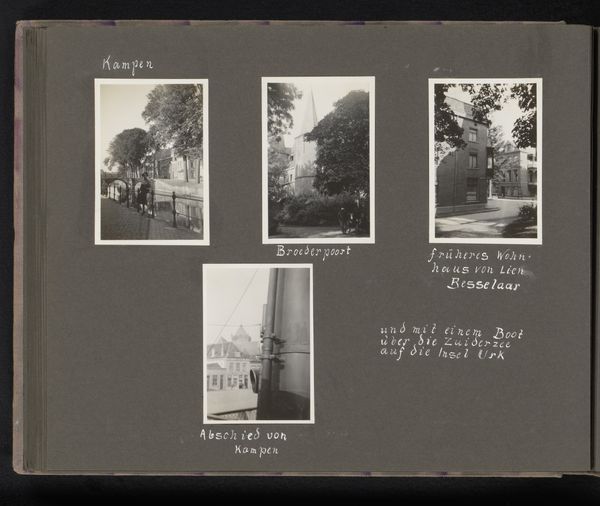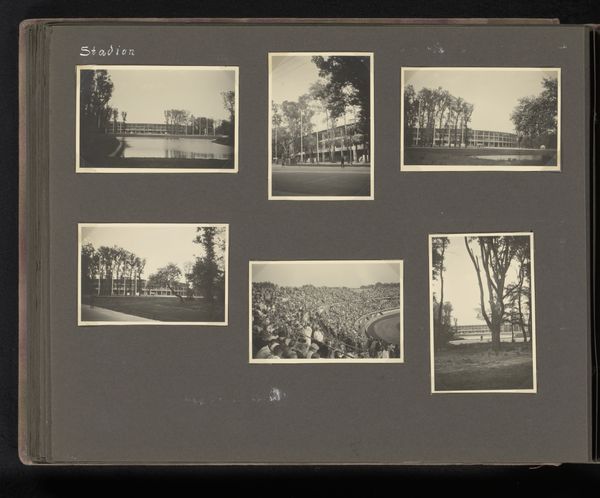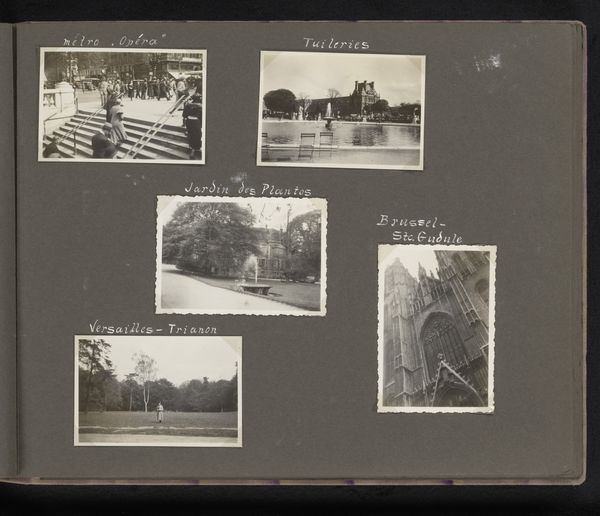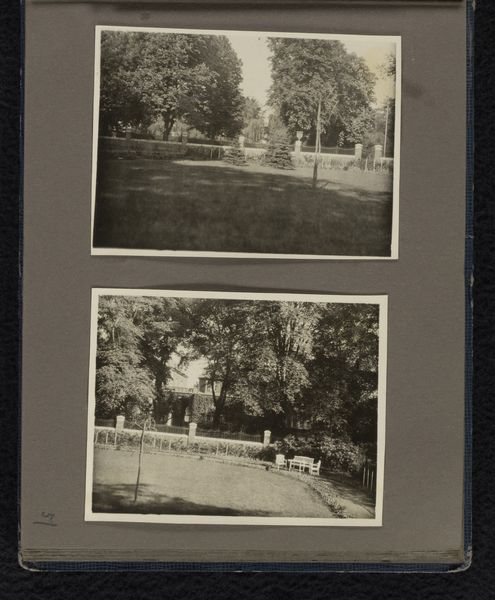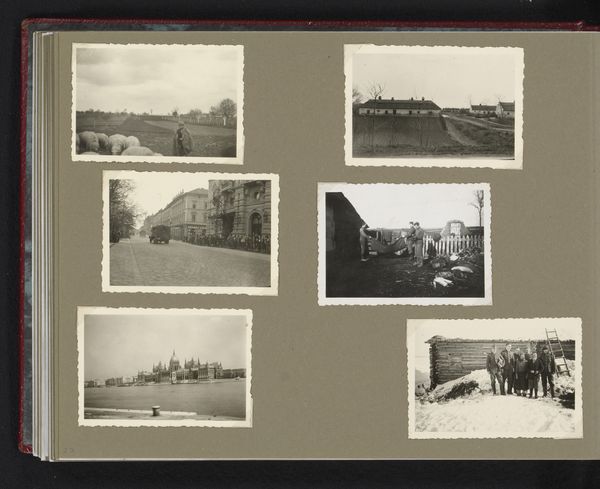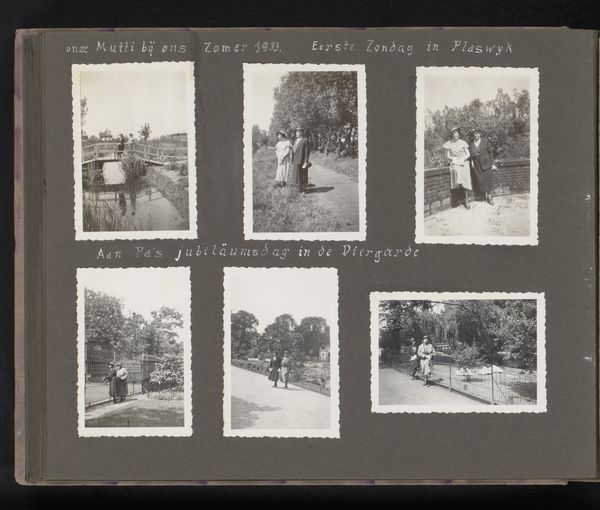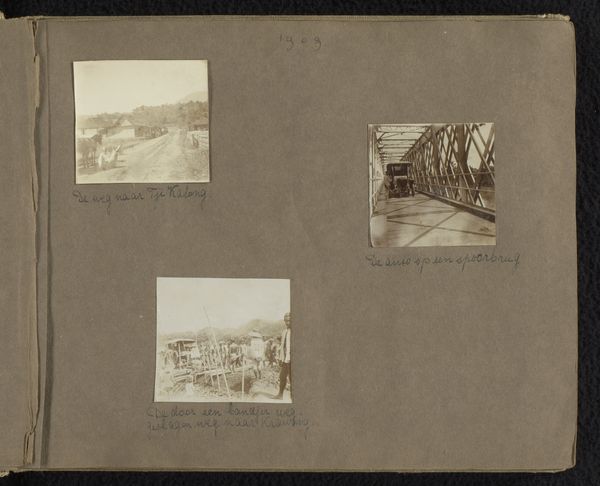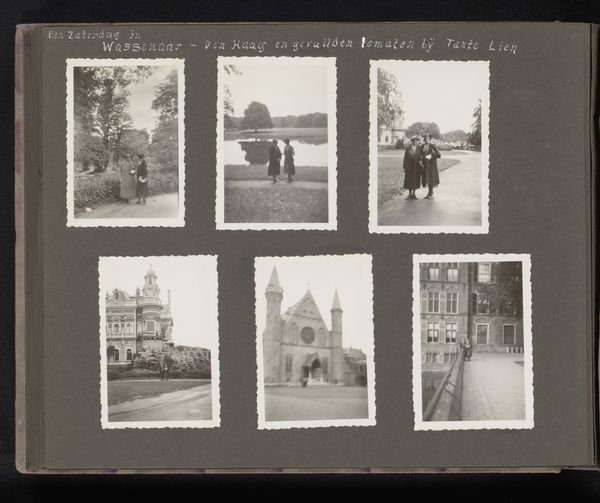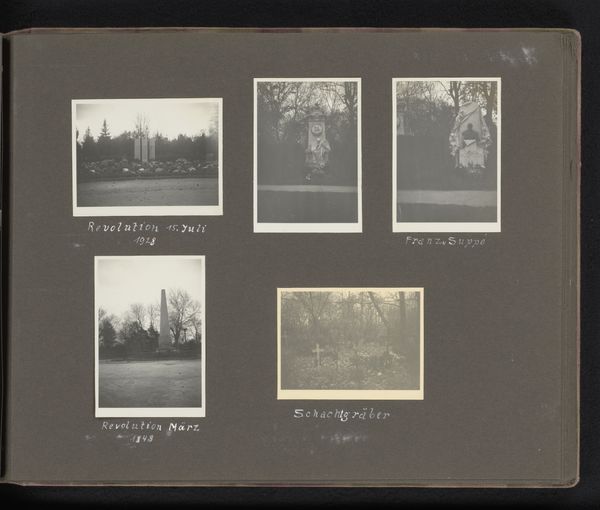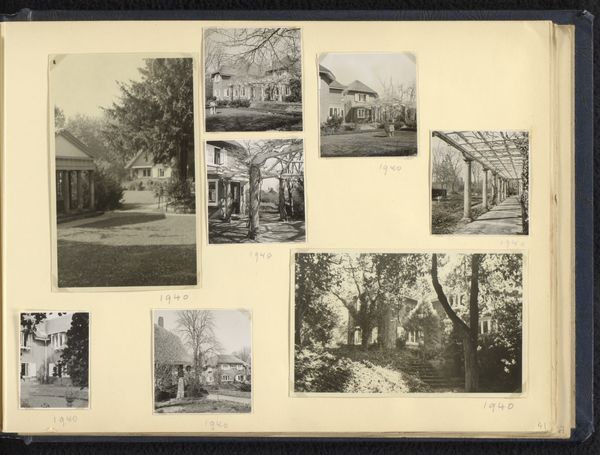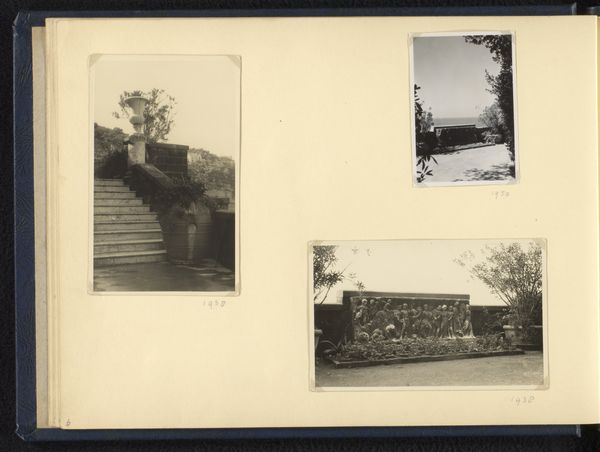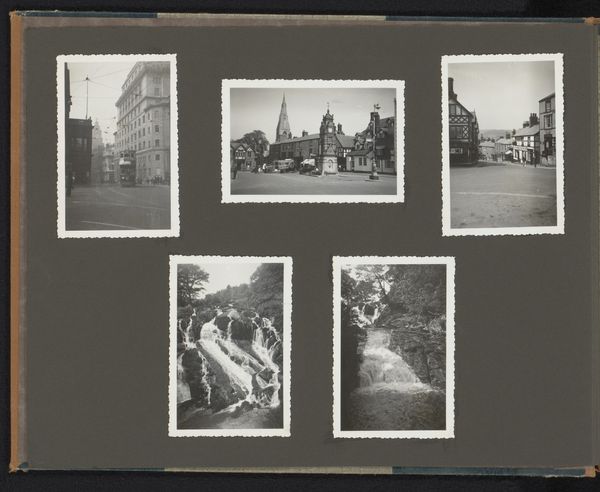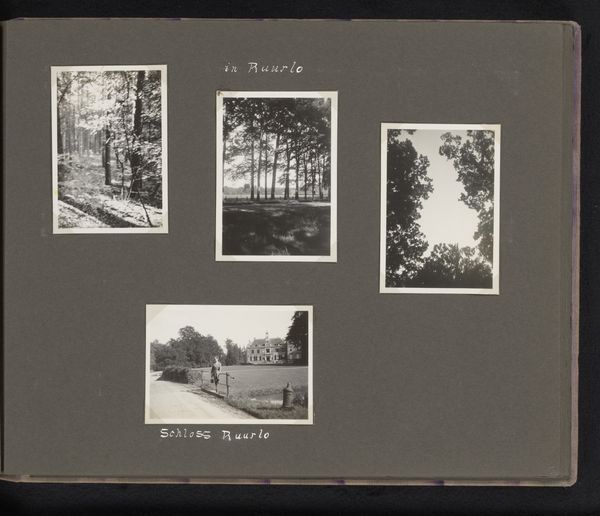
#
lake
#
pale palette
#
muted colour palette
#
white palette
#
muted light
#
unrealistic statue
#
dark colour palette
#
muted colour contrast
#
muted colour
#
pale shade
#
statue
Dimensions: height 236 mm, width 310 mm
Copyright: Rijks Museum: Open Domain
Curator: This work by Herman Besselaar, entitled "Gezicht op de IJsselkade en de kerken te Kampen," dating from 1932 to 1939, presents us with a muted panorama of urban life. Editor: It feels very controlled and compartmentalized; each photograph feels deliberately placed. I find the whole collection somewhat somber in mood. Curator: Let's consider the socio-political climate; the interwar period. This was a time of economic depression and rising nationalism. I wonder, how does that era influence Besselaar’s framing of this urban space? Are these structures meant to represent a source of local strength, of communal values? Editor: Looking at these materials, though, I see photographic prints collected on a bound page. The act of compiling itself is revealing, almost archival, emphasizing a material act of remembrance in a specific way. Who gets to record these events, who are these images produced by? It feels like these specific visual documents and collecting methodologies could highlight tensions between a subjective family archive, an institutional registry, and what the photographer saw with his eyes. Curator: Indeed, the album format shifts our perspective on individual authorship; how might these images speak in dialog with other found materials or visual motifs? This particular format affects how such imagery circulates to its viewers as an object to be seen. Editor: Absolutely, and there's an interesting contrast between the intimacy of this type of amateur book, perhaps existing in private homes and community spaces, versus our current experience, where we observe it framed and mediated in the form of art as an image of an object on a website. Curator: That reflection is crucial. Our perception, conditioned by institutions and mediated technologies, impacts how these works carry themselves historically to our current time, just as Besselaar’s labor brought this work forward originally. Editor: It gives us much to reflect on. Curator: Indeed.
Comments
No comments
Be the first to comment and join the conversation on the ultimate creative platform.
